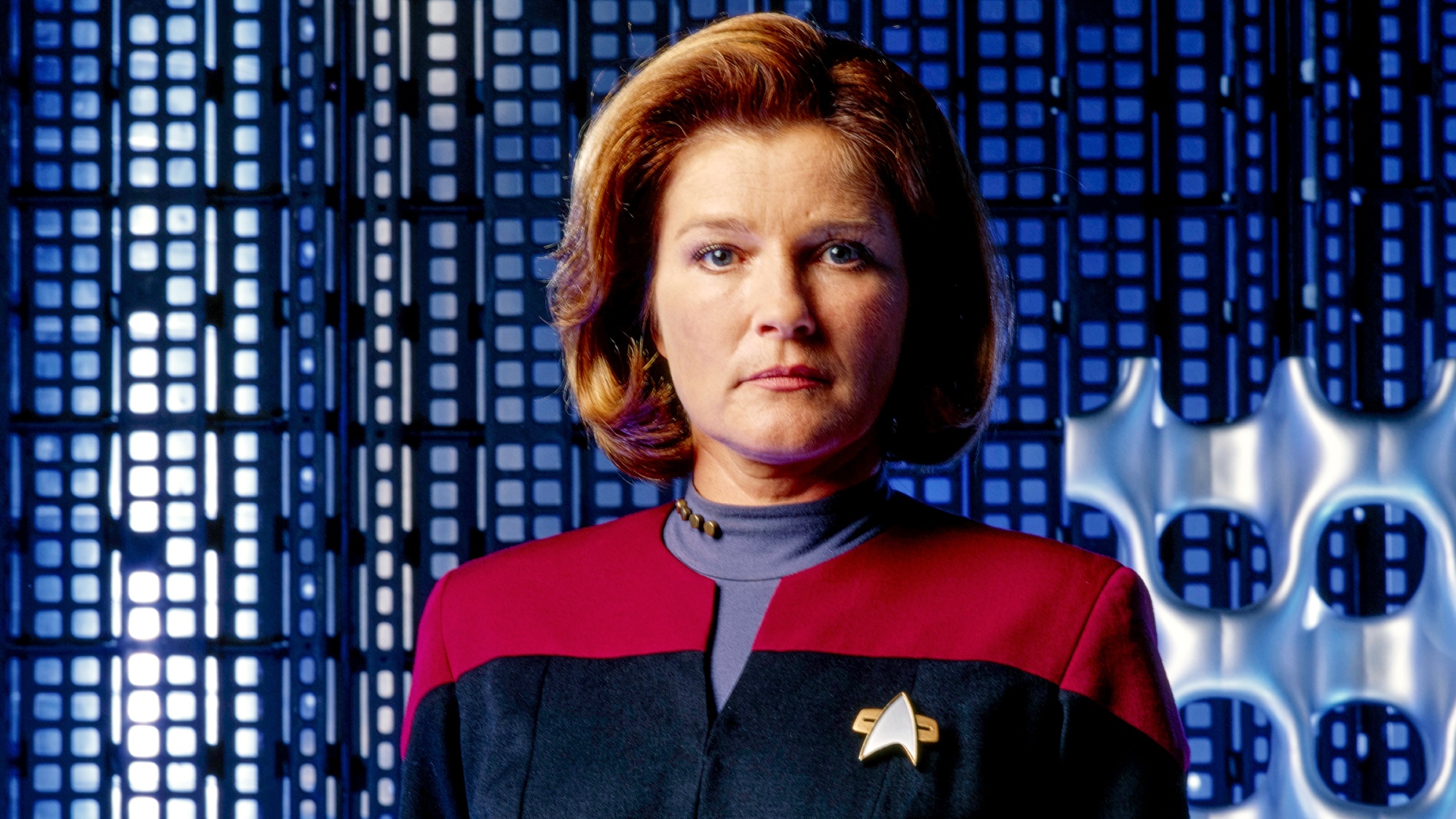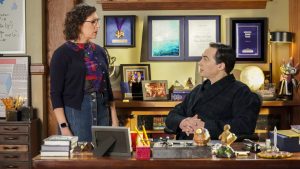
Star Trek is an ever-growing franchise, with 11 television series, plus two series of shorts and two separate film series. But despite all these spinoffs and spinoffs of spinoffs, only a couple of branches of the franchise have been given sequels. The Original Series has The Animated Series as a continuation, then its run of six sequel movies (seven, if you include Generations), plus a prequel series (Strange New Worlds); and The Next Generation has four films and a sequel series (Picard), plus a spiritual sequel in Lower Decks. But Deep Space Nine has had to make do with a single episode of Lower Decks and Enterprise gets nothing but the occasional mention as easter eggs.
Voyager, however, has been more fortunate. The inclusion of Seven of Nine as a main character in Picard has already given at least one Voyager character the full sequel treatment, but some fans might not realize that there is another series that functions as a Voyager sequel in more ways than one—Star Trek: Prodigy.
Prodigy’s Two Audiences
One of Prodigy’s biggest challenges has been to capture the interest of two separate target audiences. The series was produced with and also aired on the children’s channel Nickelodeon, and is aimed at children and teenagers. This also means it is aimed at new viewers, as no one assumes that children watching it will have seen any Star Trek before. The series introduces core concepts like what Starfleet is and how starships function in the Trek universe to brand new fans, and it does so very well.
However, it is also aimed at existing Star Trek fans of all ages. Season 1 of the show includes many callbacks and references to earlier Star Trek series that fans of those shows can appreciate. The episode “Crossroads,” for example, is a sequel to The Next Generation’s “The Outrageous Okona”; “All the World’s a Stage” is a sequel to the Original Series’ “Obsession” and the whole episode is basically an Original Series homage; and “Kobayashi” hasn’t just taken its name from the most overly referenced Star Trek story of all time (The Wrath of Khan), it actually features guest appearances from several past Star Trek stars who are no longer with us in the form of original audio clips (Leonard Nimoy, Nichelle Nichols, James Doohan, and Rene Auberjonois) and a guest appearance from Gates McFadden as The Next Generation’s Doctor Crusher in newly recorded dialogue.
Prodigy Features Several Main Characters From Voyager
Most fans will be aware that one of its main characters is a hologram of Voyager’s Captain and main character, Kathryn Janeway, played by Kate Mulgrew. Janeway primarily appears in the form of a hologram of Captain Janeway at around the age she was when Voyager was lost in the Delta Quadrant (based on her rank, as she was promoted to Admiral not long after they got back, and on her hairstyle, which matches Janeway’s famous “bun of steel” from Seasons 1-3 of Voyager). This hologram is programmed with all of Janeway’s memories (including post-Voyager, as it would hardly make sense for her to exist like a time traveler who doesn’t know what’s going on) and with her personality, making Kathryn Janeway an integral part of Prodigy from the start.
What viewers who have not watched the series might not know, though, is that hologram Janeway is not the only character from Voyager who appears in Prodigy. As the season goes on, we also get to meet Admiral Janeway—the flesh and blood Janeway we followed for seven years on her journey through the Delta Quadrant, as she is at the time Prodigy is set, which is in the year 2383. (This is just after the setting of Lower Decks, which is set in 2380-2381, and a couple of decades before Picard, which is set primarily in 2399-2401). As the storyline develops, we get to meet another main character from Voyager as well, and a third, Robert Picardo’s Doctor, is lined up to appear in season 2.
One thing grown up fans might not realize is that Prodigy is aimed at middle grade and teenage children. It’s not like some other animated spin-offs of major franchises, like Star Wars: Young Jedi Adventures or Marvel’s Spidey and His Amazing Friends, which are aimed at pre-schoolers and which, although fun, don’t have all that much appeal to an adult audience. Prodigy may be animated, but it is much more similar to something like The Whoniverse’s The Sarah Jane Adventures; the lead characters are children and teenagers, but the plot, tone, and themes are all sophisticated enough to be enjoyed by grown ups as well—in fact, Prodigy probably skews slightly older even than The Sarah Jane Adventures.
This means, among other things, that the adult and mentor characters—primarily Janeway—in Prodigy get as much attention and character development as the young leads. The Captain Janeway hologram has a lovely little story arc that builds to an emotional climax across the whole of season 1. But even more importantly for Voyager fans, Admiral Janeway has her own story arc going on as well. Over the course of the season, we see her reacting to a deeply personal loss, and we see some of her most notorious character traits playing out in a new setting—this Janeway may be older and rank higher, but she still leads with her heart, and she still makes mistakes sometimes when she trusts the wrong person, or jumps to conclusions. This is recognizably the character we know and love from Voyager!
Towards the end of the season and in the cliffhanger going into season 2, Prodigy also picks up on one of Voyager’s best character relationships, which was notoriously neglected in the original show’s series finale—Janeway’s relationship with her First Officer, Chakotay (Robert Beltran). These two were one of the show’s most popular couples to “ship” romantically and the show itself dedicated at least two episodes to that idea (season 2’s “Resolutions” and Season 7’s “Shattered”) though in both cases they decided to stay just friends. Chakotay was paired with Seven of Nine towards the end of season 7, but that pairing was so unpopular with both fans and even the actors that it has never been mentioned again, and a suggested appearance from an alternate timeline version of Chakotay in Picard season 2 was turned down by Beltran.
Chakotay has made several guest appearances in Prodigy, though, including a flashback sequence that shows him and Admiral Janeway hugging, and there is a moment towards the end of the season in which Janeway is seen reaching out towards his image while he is missing in action. Since Prodigy is aimed at teenagers, not young children, it’s free to explore romantic storylines in a family-friendly way, and one of its recurring threads is the somewhat romantic tension between its main character Dal R’El (Brett Gray) and Gwyndala (Ella Purnell), so there is hope for Janeway/Chakotay shippers yet.
Whether or not the show intends to develop Janeway and Chakotay’s relationship romantically, it is certainly bringing their friendship to the front and center of its storyline—he cliffhanger which ended season 1 is built entirely around Admiral Janeway’s determination to find and rescue Chakotay. In other words, all of the tension around the end of the first season of Prodigy is about this central Voyager relationship and is carrying on a Voyager plot thread. Thank goodness Netflix has picked up season 2 after it was dropped by Paramount+, as having that particular carrot dangled in front of Voyager fans only to have it taken away again was just too cruel!
Prodigy Is Also a Sequel to Voyager’s Plot and Story Arcs
Prodigy also functions as a continuation of Voyager’s central concept and is able to pick up on other aspects of its story. In Voyager’s pilot episode, the ship was stranded in the Delta Quadrant, a distant part of the galaxy more than 70,000 light years from Earth, a distance it would take “more than 75 years” to cover, even going at top speed all the time. The series followed the ship’s journey back home, combining Trek’s traditional theme of exploration with episodes centered around trying to find a quicker way to get back. It featured a crew that had absorbed a non-Starfleet Maquis ship (a resistance group fighting the Cardassians) alongside the Starfleet crew.
The show became notorious for using an episodic style similar to The Original Series and The Next Generation rather than leaning more on its story arcs like Deep Space Nine as many fans would have preferred, and the concept of two conflicting crews working together was largely ignored after a handful of episodes in season 1. However, the ideas were still there, driving the show. There were occasional stories looking at the conflicts between crewmembers in later seasons, like season 7’s “Repression,” and although the format was primarily Space Anomaly of the Week, the journey home was a story that developed across all seven seasons, with multiple episodes focused on attempts to get home more quickly.
The Delta Quadrant setting also allowed Voyager to put a lot of focus on exploration and Original Series-style Planets of the Week, introducing viewers to lots of new alien species that the show added to the Star Trek universe. The Talaxians, the Kazon, the Hirogen, the Vidiians, and the Malon are probably the most memorable, but there were many others, as well as many interactions with Delta Quadrant-based Next Generation baddies the Borg.
The core concept of Prodigy follows on directly from Voyager’s. In the pilot episode, we meet our motley crew of young aliens in the Tars Lamora prison colony in the Delta Quadrant. They are all of different races and one of them, Gwyndala, is initially an antagonist to the others, just like Voyager’s two opposing crews.
By the end of the initial two-parter, our heroes have got their hands on the USS Protostar, a prototype for a small Starfleet ship that can travel much, much faster than any others we have seen. The ship was sent out to return to the Delta Quadrant, captained by Chakotay and accompanied by the Captain Janeway hologram, because they are the experts in that part of the galaxy and already have some contacts there, but it was attacked and lost before being found by Dal R’El and the others.
The Show Is Full of Voyager References and Easter Eggs
The action kicks off in the Delta Quadrant, picking up the pieces from a mission that was specifically designed to follow up on Voyager’s journey. Over the course of season 1, we have seen appearances from the Kazon, the Borg, and the Brenari (a telepathic species whose refugees were helped by Voyager’s crew in season 5’s “Counterpoint”), and we have heard references to the Talaxians as well as a more obscure Voyager species, such as the Sakari (the species living underground in season 3’s “Blood Fever”). Janeway has even mentioned the events of Voyager’s most infamous episode, one so unpopular on its initial release that fans thought it had been written out of the continuity, but which is actually really rather fun and entertaining and is now probably one of its best known hours—she mentions that she was “once turned into a salamander,” a reference to her and Lt. Paris’s (Robert Duncan McNeil) transformation into lizards before abandoning their lizard babies in season 2’s “Threshold.”
The writers have even given the Protostar a new feature to fix one of Voyager’s most notorious plot holes. The USS Voyager was lost in the Delta Quadrant with minimal resources, and several episodes revolved around the search for deuterium fuel. And yet somehow, despite numerous shuttlecraft crashes, many of which were specifically described as having destroyed the shuttlecraft, the ship never seemed to run out of shuttles.
Starfleet ships of this era are generally equipped with two shuttlecraft, as was Voyager, plus they had Neelix’s (Ethan Phillips) ship, which they hardly ever used. In season 5, they built their own shuttle, the Delta Flyer, which they proceeded to crash just as often as the other shuttles, if not more so. And yet they never ever ran out. Entire websites were devoted to counting how many shuttlecraft Voyager had lost and apparently replaced with identical shuttles. Were the crewmembers Janeway didn’t like trapped in the bowels of the ship somewhere, building and re-building shuttles? Why did they build them exactly the same every time, and keep giving them the same names? How were they constantly running out of fuel, having to ration replicator food, forcing everyone to eat Neelix’s hair pasta and leola root stew because they didn’t have energy to spare, but they were able to keep up a constant stream of replicated shuttles? This mystery has never been solved, but the writers of Prodigy thought ahead—the Protostar has a replicator specifically designed to replicate shuttlecraft-sized vehicles.
Voyager is not the only Star Trek series referenced in Prodigy. The show is absolutely bursting with references, easter Eggs, and follow-ups to stories, species, and tech from all of the pre-2017 Star Trek series. But its plot, setup, and story and character development make it not just a “spiritual sequel” to Star Trek: Voyager—it is literally a sequel series to Voyager, continuing Voyager’s plot threads and further developing its setting. If you’re a Star Trek: Voyager fan and you haven’t yet watched Prodigy, you’re missing out.
Star Trek: Prodigy season 3 hits Netflix on July 1.
The post The Star Trek: Voyager Sequel You’ve Always Wanted Already Exists appeared first on Den of Geek.




